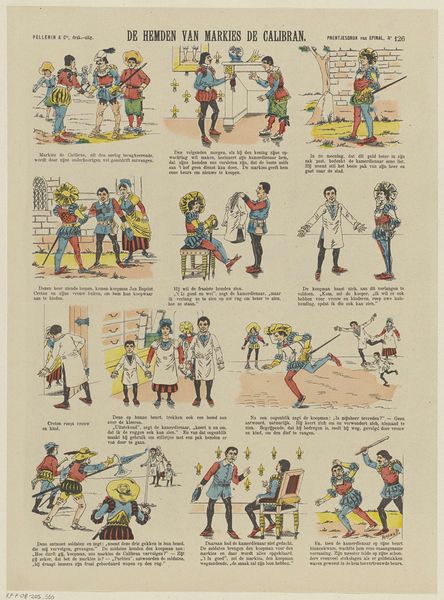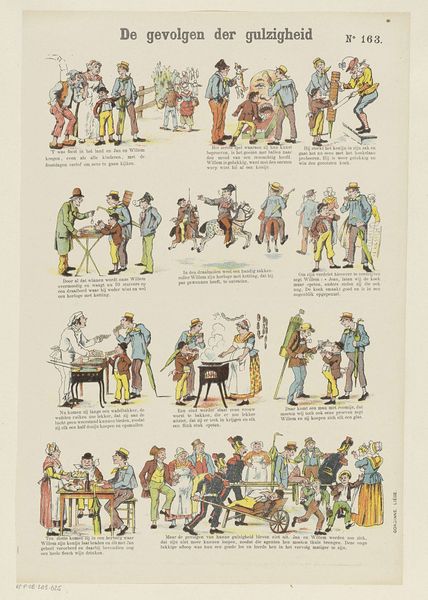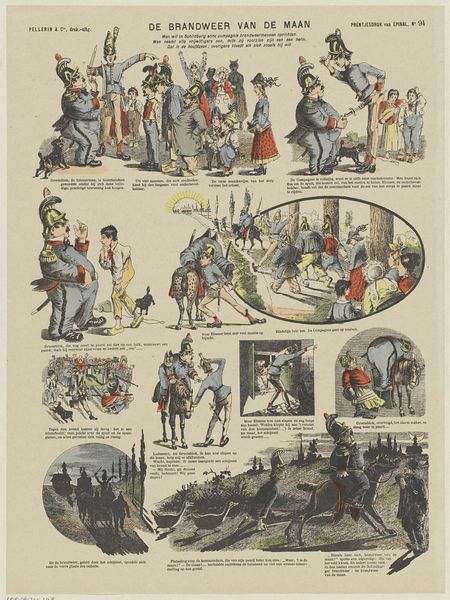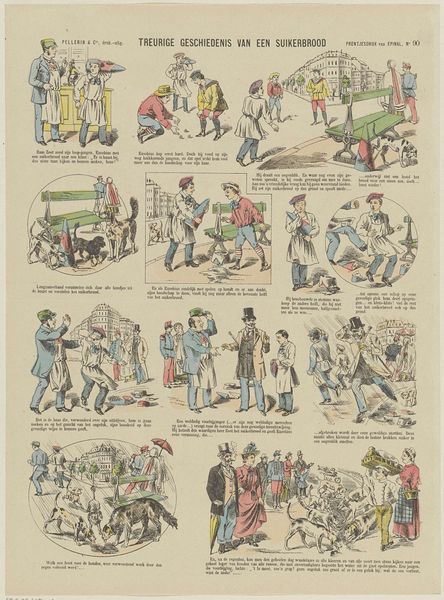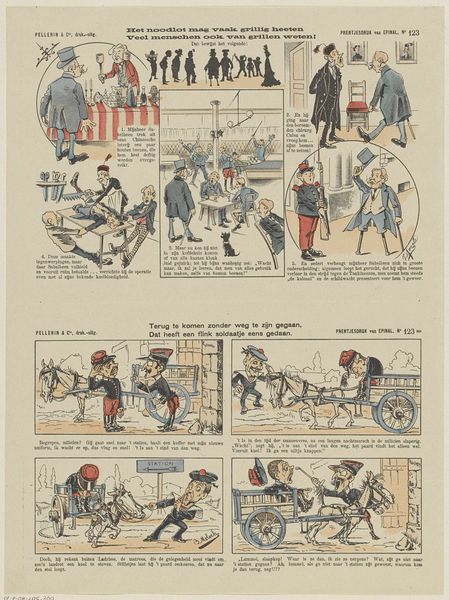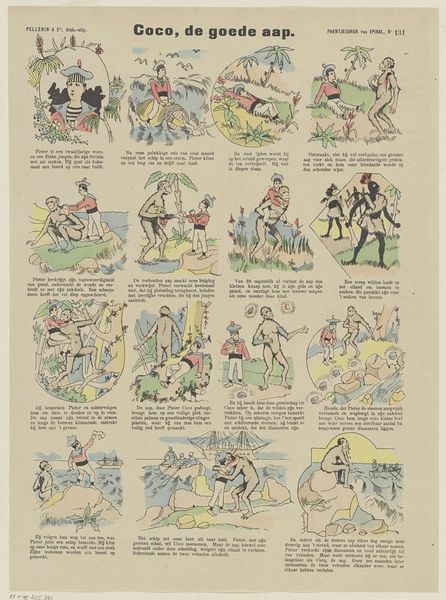
drawing, lithograph, print
#
drawing
#
comic strip sketch
#
aged paper
#
narrative-art
#
lithograph
# print
#
caricature
#
sketch book
#
traditional media
#
figuration
#
personal sketchbook
#
sketchwork
#
comic
#
line
#
sketchbook drawing
#
genre-painting
#
storyboard and sketchbook work
#
cartoon carciture
#
sketchbook art
Dimensions: height 398 mm, width 275 mm
Copyright: Rijks Museum: Open Domain
Curator: This lithograph, rendered between 1894 and 1959 and currently held here at the Rijksmuseum, is entitled "Het rijwiel 'de ononerwinnelijke'". The artist behind this piece is Gordinne. It feels like something out of a children's book; naive, light-hearted. Editor: My initial impression is one of gentle chaos, perhaps, an anticipation of comedic calamity. The figures are positioned in tiers like frames of a flip-book, each row showcasing another phase of the story. What do you know of its place within the history of cycling imagery, for example? Curator: At its core, the artwork showcases a cycling race. The bicycle is presented not just as a vehicle, but as an icon of modernity and progress, ideals embraced by the late 19th century, when cycling boomed in popularity. It depicts a visual narrative, really, about ambition, progress, but also, as you pointed out, gentle chaos. It is also a depiction of class. Editor: Yes, you can feel those aspirations intertwined with anxieties about social mobility and access. There are many of us who never were welcome in such activities, even today. And is it my imagination, or are some of these competitors destined to fail, a premonition of downfall through overreaching? This comic-strip format itself almost seems to invite class analysis through accessibility and the flattening of hierarchy within its form. Curator: It is entirely possible! And don't forget, the turn of the century was also a time of social commentary through caricature, especially within printed media. A work like this could very well act as a playful jab at the seriousness of competition or the absurdity of fixating on victory at any cost. Its creator was no doubt involved with progressive issues in Belgium. Editor: Thank you. Seeing it through that lens clarifies so much; the artwork is now charged with potential criticisms of early consumer culture wrapped up in what initially reads as simplistic humor. The very material it’s printed on seems to amplify its accessibility, refusing the high-art trappings some viewers expect. Curator: Indeed. We began by acknowledging the simple composition and naive style. Perhaps these very traits were intentional choices geared to resonate more strongly and universally during this time. Editor: So it seems even humor may carry significant ideological baggage, inviting us to unpack not just what we see but why, especially when looking at so called innocent work, to reconsider it for its social fingerprint.
Comments
No comments
Be the first to comment and join the conversation on the ultimate creative platform.






